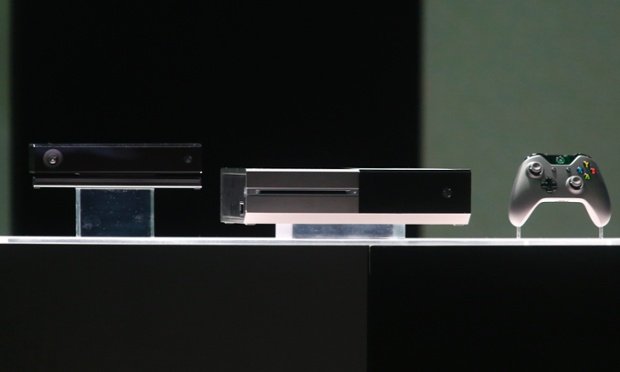The dust has settled and all three consoles are now out in the open.
We’ve got the Wii U, the Playstation 4 and now, finally, Xbox One. One of the most interesting things about how Sony and Microsoft have approached the debuts of their new consoles is the way their marketing positions have changed going into this next generation. In a sense, both companies have now taken positions that they previously criticized the opposing company for.
Microsoft’s reveal today placed heavy emphasis on multi-media and interface features, including, finally a Blu-ray drive, a far cry from the days when slammed Sony for not focusing on gaming. Conversely, Sony opened with a focus on the gamer, embracing the online and social aspects that were the bread and butter of Xbox Live at the start of the current generation. Both companies have changed their stories now, and part of that is a need to distance themselves from the perceptions that they have already established within the market, and the increasing competition they face from the likes of Apple, Google and the Internet in general.
 When taking a long haul view of these seeming attitude changes, neither of them are particularly surprising. The Microsoft change of heart isn’t a new position, so much as the long awaited reveal of what they’ve always wanted. Even back in the years when Bill Gates was still at the head of Microsoft, it was well known that what he’d always wanted was a way to get the PC to be as integral to the living room as it already was to the workplace, or home office/study. The early emphasis on gaming was merely the Trojan horse tactic to get the gamers—the early adopters—to take those first steps.
When taking a long haul view of these seeming attitude changes, neither of them are particularly surprising. The Microsoft change of heart isn’t a new position, so much as the long awaited reveal of what they’ve always wanted. Even back in the years when Bill Gates was still at the head of Microsoft, it was well known that what he’d always wanted was a way to get the PC to be as integral to the living room as it already was to the workplace, or home office/study. The early emphasis on gaming was merely the Trojan horse tactic to get the gamers—the early adopters—to take those first steps.
Sony on the other hand, needed to find a way to make themselves more relevant after the bloody, costly victory that was the format war between Blu-ray and HD-DVD. The PS3, for better or for worse at the time, was their Trojan horse to win a format war that even Microsoft must now bow to if it wants to curry a position as the primary media centre for the living room television. It was that need to have exotic, cutting edge technology in the PS3 that dramatically ramped up the price, made the hardware difficult to get to grips with, and helped Sony lose much of the market dominance they enjoyed in the two previous generations.
Surprisingly, the one thing that both Microsoft and Sony both seem to agree on is that they can’t ignore iOS or Android devices. The one thing that both consoles are eager to take advantage of is the plethora of iPhone, iPads, Nexus’s (Nexi?) and Galaxies that everyone is using on the go or in other parts of the home. Both companies want people to be able to bring up their smartphone or tablet and use it in some way to interact with or somehow enhance their console experience. Strategically, this makes a lot of sense. The tablet and smartphone invasion has become ubiquitous in the average home. Very people don’t have one or both of these products and they aggressively compete for attention when it comes to the interactive market. By integrating these products into the ecosystem of their consoles, both Sony and Microsoft have a chance to steer some of that attention back to their own hardware, software and services. And honestly, they had very little choice; whichever company fell prey to corporate pride and stated “We are NOT going to let you use your iPad with our device because we don’t like Apple,” was going to lose considerable casual/mainstream marketshare to the competing console that did.
Now that everything is out in the open however, there’s only thing left to do; wait on details and see which prices, services and games are going to win your wallet vote.




